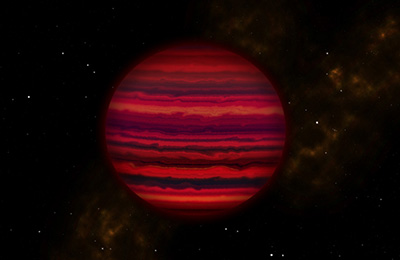
Artist’s rendering of WISE 0855 as it might appear if viewed up close in infrared light. (Illustration by Joy Pollard, Gemini Observatory/AURA)
Difficult spectroscopic observations reveal properties of the coldest known object outside of our solar system. Since its detection in 2014, the brown dwarf known as WISE 0855 has fascinated astronomers. Only 7.2 light-years from Earth, it is the coldest known object outside of our solar system and is just barely visible at infrared wavelengths with the largest ground-based telescopes.
Now, a team has succeeded in obtaining an infrared spectrum of WISE 0855 using the Gemini North telescope in Hawaii, providing the first details of the object’s composition and chemistry...
Read More









Recent Comments